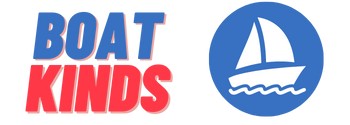Jet boats offer an exciting and unique boating experience compared to traditional propeller-driven boats. With their high maneuverability and shallow water capabilities, they are a favorite among thrill-seekers and watersports enthusiasts. However, a common question for prospective buyers or first-time users is: Are jet boats harder to drive?
In this detailed guide, we will break down everything you need to know about driving a jet boat, how it compares to conventional boats, the learning curve involved, and expert tips to master your skills on the water.
What Is a Jet Boat?
A jet boat is a watercraft powered by a jet propulsion system instead of a traditional outboard or inboard propeller. Instead of rotating blades pushing the boat forward, a jet boat draws water into a pump and expels it forcefully through a nozzle at the back, creating thrust. This unique propulsion method significantly affects the way these boats perform and handle.
Key Characteristics of Jet Boats:
- No exposed propeller
- Excellent maneuverability
- Can operate in shallow waters
- Faster acceleration
- Often shorter in length and lighter in weight
- Require throttle to steer effectively at all speeds
Jet boats are popular for watersports, rescue missions, river navigation, and even military use because of their agility and ability to operate in just a few inches of water.
Jet Boat vs. Propeller Boat: What Makes the Difference?
Before we answer whether jet boats are harder to drive, it’s essential to understand how they differ from propeller boats:
Feature | Jet Boat | Propeller Boat |
Steering Mechanism | Directional nozzle | Rudder / Outboard motor |
Reverse Gear | Bucket redirects water | Gear-driven system |
Acceleration | Instant throttle response | Moderate throttle response |
Control at Low Speed | Less precise without throttle | More stable due to rudder effect |
Maintenance | Easier (no external propeller) | More complex mechanical parts |
Shallow Water Use | Excellent | Limited due to draft/propeller |
Safety Around Swimmers | Safer (no blade) | Less safe (spinning propeller) |
These differences in design and function lead to key differences in handling, especially for new drivers. That brings us to the core question.
Are Jet Boats Harder to Drive?
The Short Answer:
Jet boats are not necessarily harder to drive, but they require a different skill set and some adaptation. Most of the challenges arise from how jet propulsion works, especially at idle speeds, docking, and reversing.
1. Low-Speed Handling
One of the biggest hurdles for new jet boat drivers is control at low speeds. Unlike prop boats that can steer at idle using rudders, jet boats require throttle input to steer. This means:
- You must apply some throttle to maintain steering authority.
- It can be tricky to maneuver slowly in tight spaces like marinas.
Tip: Practice “blipping” the throttle while steering to maintain control without gaining too much speed.
2. Docking and Reversing
Jet boats do not have a conventional reverse gear. Instead, they use a reverse bucket that redirects thrust.
- The reverse is more abrupt than smooth.
- It may take time to master the technique of gentle maneuvering in reverse.
Tip: Use short bursts of throttle in reverse and give yourself more space than usual.
3. Steering Response
Jet boats are extremely responsive at higher speeds, often catching beginners off guard.
- Small steering inputs can result in sharp turns.
- Overcorrection is a common beginner mistake.
Tip: Start with small inputs and increase speed gradually until you’re confident.
4. No Neutral
Unlike a propeller boat, a jet boat doesn’t have a true “neutral”. When the engine is on, there’s always some water being expelled, which can move the boat slightly.
Tip: Familiarize yourself with your boat’s “stationary” behavior. Keep a hand on the wheel and be ready to correct position.
5. Throttle-Based Steering
One of the most unique elements of a jet boat is that steering is only effective when there is water being pushed through the nozzle. Therefore:
- You must actively manage throttle to maintain control
- Letting go of the throttle during a turn reduces steerability
Tip: Never cut throttle completely while making a turn—ease off gradually if needed.
Who Might Find Jet Boats More Challenging?
Jet boats may be more difficult for the following types of users:
- First-time boaters: If you’ve never driven any kind of boat, a jet boat’s unique handling may take some extra time to master.
- People used to large cruisers or inboards: Transitioning from heavy, slow-turning boats to a lightweight, high-response jet boat can be a shock.
- Nervous drivers: The requirement to use throttle for maneuvering may intimidate some.
- Those unfamiliar with reverse buckets: Maneuvering in tight spaces using the reverse bucket takes some time to learn.
However, once these initial hurdles are overcome, most drivers find jet boats intuitive and rewarding to use.
Learning Curve: How Long Does It Take?
Most people get the hang of basic jet boat operation within a few hours of practice. Becoming proficient at docking and tight-space handling may take several outings.
Factors that affect the learning curve:
- Previous boating experience
- Boat size and weight
- Water conditions
- Confidence level
- Frequency of use
Many boaters report feeling fully confident within 3–5 outings.
Advantages That Balance the Learning Curve
Even if jet boats take a bit of getting used to, they offer significant advantages that make them worth the effort:
1. Safety
- No exposed propeller — safer for swimmers and marine life
- Instant stop capability by cutting throttle
- Less risk of entanglement with debris
2. Versatility
- Can access shallow rivers, sandbars, and beaches
- Ideal for watersports like wakeboarding and tubing
- Navigate narrow or rocky passages with ease
3. Maintenance
- Fewer moving parts exposed to water
- No need to worry about propeller damage
- Easier winterization and cleaning
Common Mistakes Jet Boat Beginners Make
- Cutting throttle in a turn: Eliminates steering control
- Oversteering: Especially at high speeds, minor inputs go a long way
- Not practicing docking: This is where most issues occur
- Ignoring wind/current: These impact light jet boats more noticeably
- Avoiding practice: Practice builds muscle memory quickly
Pro Tips for Driving a Jet Boat Like a Pro
- Practice in open water first. Avoid docks or marinas until you’re confident.
- Use short throttle bursts to maneuver in tight spots.
- Turn before you reverse. Line up your direction first.
- Get to know your boat’s behavior. Each jet boat reacts differently.
- Watch for wind and current. You can’t drift-correct like in a prop boat.
- Use visual markers. Practice docking with floating buoys.
- Always plan your exit before entering tight spaces.
What Jet Boat Owners Say
Many experienced jet boaters say the initial learning curve is outweighed by the performance and excitement these boats offer.
“It felt weird at first, especially docking, but now I wouldn’t go back to props.”
“I love the instant power. Once you get the hang of it, jet boats are a blast.”
“Driving a jet boat is like driving a sports car on water.”
Their excitement often outweighs the temporary frustration of the learning curve.
Best Jet Boats for Beginners
If you’re new to jet boats, consider starting with models known for their user-friendliness:
- Yamaha AR195 – Stable, well-balanced and great for families
- Scarab 165 ID – Compact, easy to handle, and budget-friendly
- Sea-Doo Switch – A modular pontoon-style jet boat with intuitive control
- Chaparral Vortex 203 VRX – Powerful yet beginner-friendly design
These boats often come with enhanced control systems and better balance, helping new drivers learn faster.
Final Thoughts: Should You Be Worried?
So, are jet boats harder to drive? They are different, not necessarily more difficult. With a little patience, practice, and respect for the learning curve, most users adapt quickly.
If you’re looking for an agile, low-maintenance, and safe boat that excels in fun and performance, a jet boat could be the perfect fit. Just be ready to invest a bit of time learning the ropes—and enjoy the ride!
The rewards of driving a jet boat are many: from adrenaline-pumping turns to peaceful shallow-water cruises. The initial adaptation phase is a small price to pay for what could become your favorite way to experience the water.


